In our previous Mastering Accuracy articles, we discussed GNSS, its error sources, and how RTK mitigates them by assuming the base and rover are close enough for atmospheric errors to be removed via double-difference calculations. However, atmospheric layers are often heterogeneous, so this method may not fully eliminate errors, leading to reduced accuracy.
What is ionosphere and how does it impact GNSS
The ionosphere is a crucial component of Earth’s upper atmosphere, situated approximately from 50 to 1,000 kilometers above the Earth’s surface.
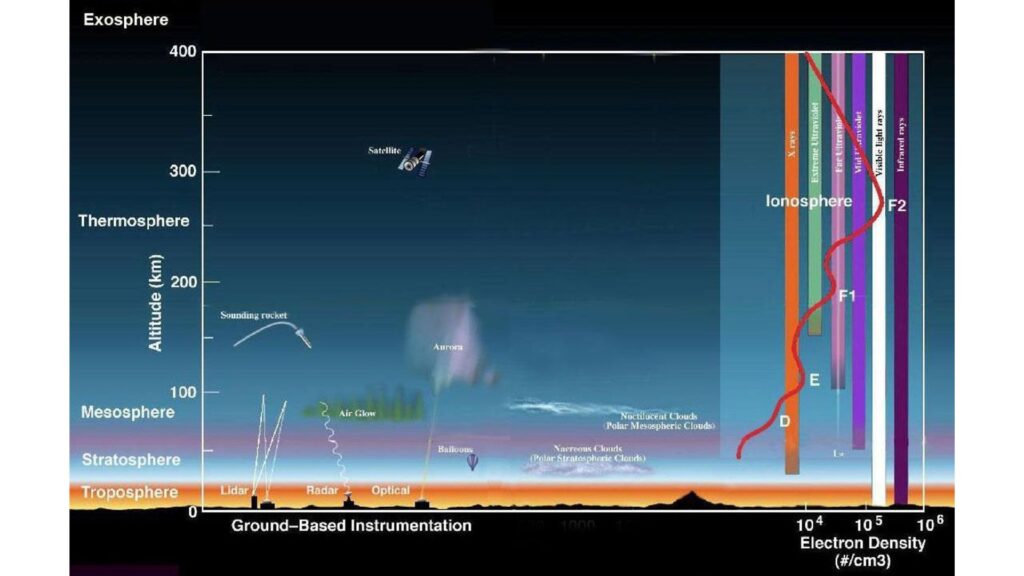
Solar radiation hit particles in this atmosphere layer, resulting in the presence of free electrons and ions (atoms that have gain or lost electrons). The degree of ionization varies with altitude, solar activity, and time of day.
Polar auroras are a visible consequence of this upper atmosphere ionization. Concerning RF communication, and in particular GNSS signals transmission, these charged particles create delays on the signals as they pass through the ionosphere. And since GNSS fundamentally relies on being able to take into account the time for the signals to travel, these delays have a major impact on GNSS accuracy.
In case of high solar activity, the impact can be even more challenging : ionospheric scintillation can degrade signals in a way they become unusable for navigation. Solar storms can also cause permanent or temporary failures on infrastructure. Here are a few examples:
- March 1989: major electric power failures were observed following a solar storm
- July 2000: radio black outs, and satellites failure
- February 2022: 40 Starlink satellites were destroyed by a solar storm
Ionosphere cycles and periodicity
The charge level of the ionosphere exhibits periodic patterns influenced by solar activity, seasonal variations, and daily changes.
Solar cycles
The solar cycle refers to the approximately 11-year cycle of changes in the Sun’s activity. This cycle is marked by the waxing and waning of the number of sunspots on the Sun’s surface. Sunspots are temporary phenomena on the Sun that appear as dark spots and are associated with intense magnetic activity.
The solar cycle can be divided into two main phases: solar minimum and solar maximum. During solar minimum, the Sun has fewer sunspots, and its overall activity is relatively low. As the cycle progresses towards solar maximum, the number of sunspots increases, along with heightened solar activity.
During periods of high solar activity, the ionosphere experiences increased electron density, amplifying the ionospheric delay effect on GNSS signals.
Since 2020 the solar activity has been increasing, with a high activity registered since the second half of 2022 ; and a peak expected in 2025. This high activity leads to overall poorer GNSS performance and makes RTK fix more challenging to acquire.
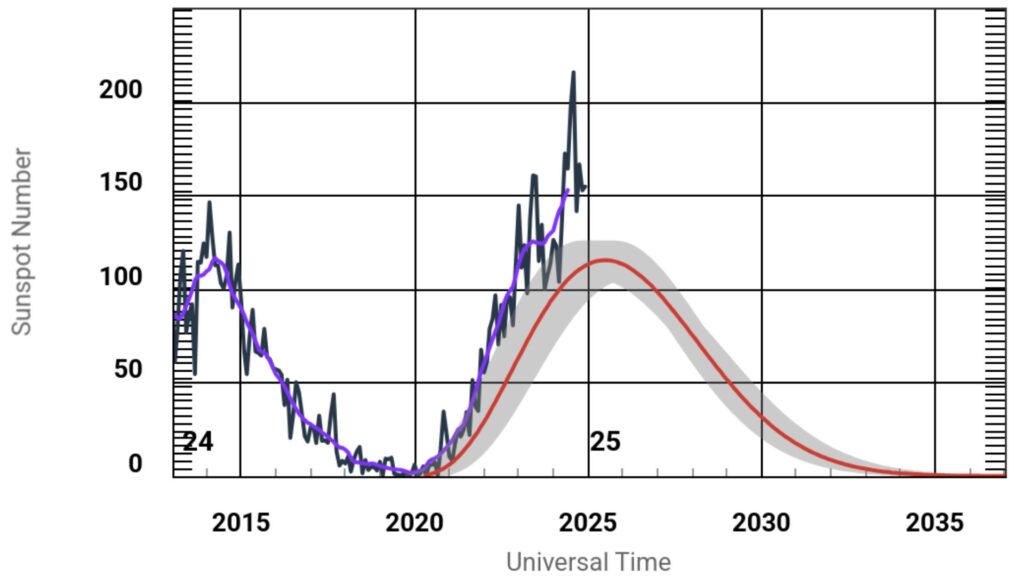
Seasonal cycles
Seasonal changes play a crucial role in ionospheric behavior. In northern latitudes, Spring and fall months generally witness higher ionization levels due to increased solar radiation, while summer and winter months experience lower ionization.
These seasonal variations impact the GNSS signals differently, contributing to the overall variability in positioning accuracy.
Daily variations
Daily variations in the ionosphere are influenced by the Earth’s rotation and the position of the sun. As the Earth rotates, different regions experience varying levels of ionization. On the plot below TECU stands for Total Electron Content Unit, which characterizes the ionosphere activity and also relates to the extra delay experienced by the signals.
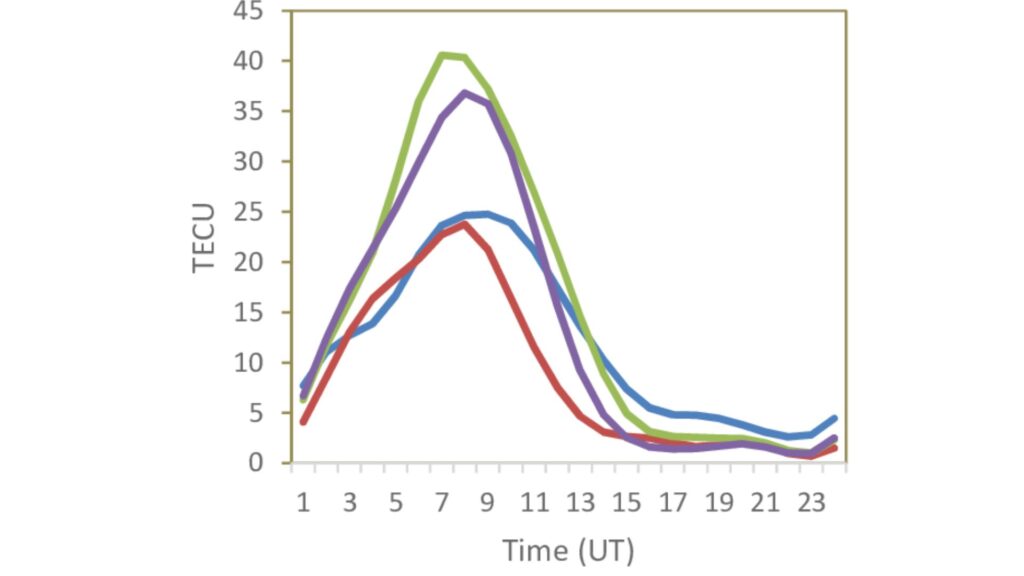
Location
On top of the above mentioned cyclic, seasonal and daily variations, the position on Earth has a large impact on the ionospheric activity. The average ionospheric activity is higher around the geomagnetic equator.
Typical examples of a daily ionospheric activity at two dates
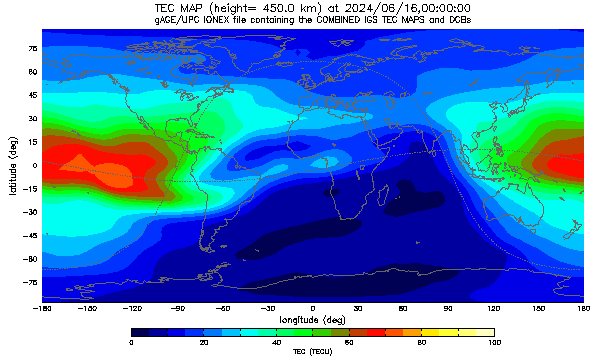
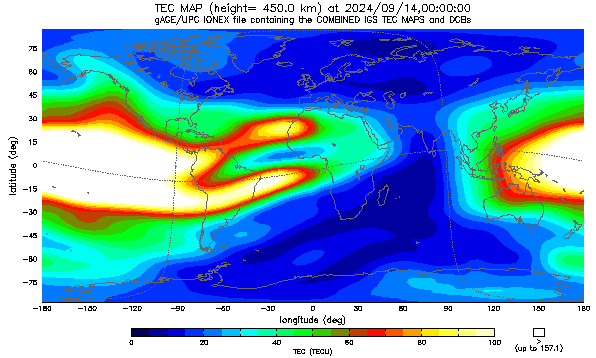
Atmospheric errors impact on RTK: state of the art
Depending on the technology used on the GNSS receiver, the effects of atmospheric errors varies.
Entry level RTK receivers usually do not really cope with this impact and may experience lower RTK fix rate or higher convergence times.
Higher grade (geodetic) GNSS receivers or post-processing engines may embed a certain level of ionospheric mitigation which can be based on two major techniques:
- Specific measurement combination called Iono Free, also referred as L3 in some scientific publications.
- Estimating ionospheric errors by using dedicated states in the navigation filter
Both methods has pros & cons but usually will come with a significantly higher noise and/or convergence time.
Mitigate these effects with Ionoshield technology
To best support our customers, we have developed for Qinertia 4 a groundbreaking technology to correct the effect of the high Ionospheric activity: Ionoshield.
Ionoshield leverages the full power of PPK to provide reliable centimetric RTK fix solutions even in difficult GNSS conditions and high ionospheric activity. Ionoshield is atmospheric error mitigation algorithm. It uses the observations on the base and on the rover to determine the errors introduced by the ionosphere and the troposphere.
It uses all available frequencies and constellation to estimate the atmospheric errors and compensate them. An intelligent strategy minimizes the convergence time while the forward / backward / merge processing completes the process to target a zero convergence time, even in challenging conditions.
Finally the Ionoshield couples with the embedded RAIM algorithm to detect and exclude any faulty satellite due to ionospheric issues such as scintillation.
With this approach Ionoshield yields significant benefits:
- Unmatched capacity to reach RTK fix and exhibit centimetric accuracy
- No added noise unlike other iono processing techniques such as ionofree combination
- Takes full advantage of modern multi frequency receivers to increase precision & robustness using three frequencies full constellations PPK
- Works even in land applications (light to medium urban environments).
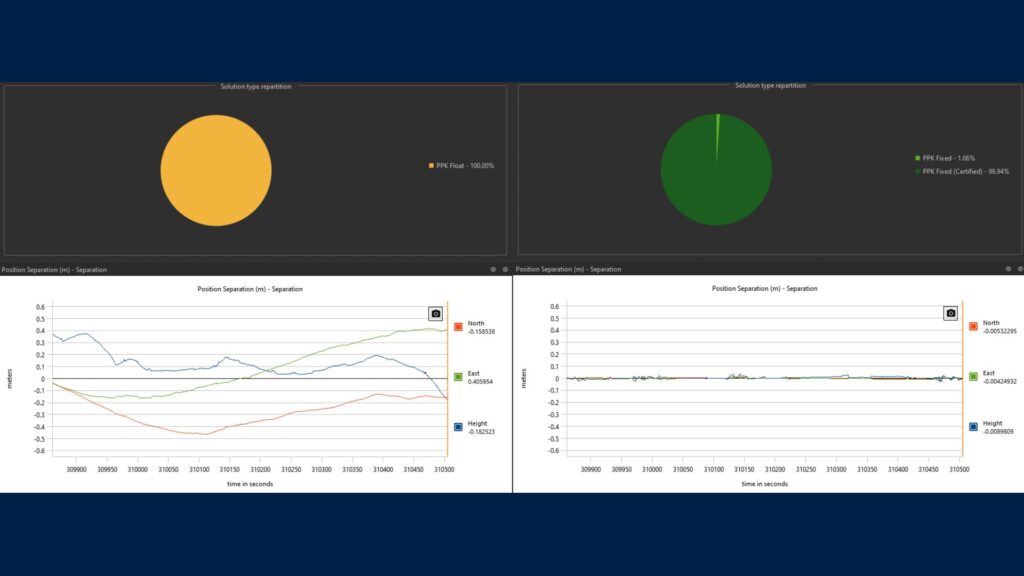
To make Ionoshield as easy to use as possible, Qinertia also integrates an automatic selection option. This automatic option assesses the ionospheric activity before selecting the processing mode: single base PPK, Ionoshield PPK, or VBS. For advanced users, it is also possible to select manually the processing mode.
While Ionoshield offers tremendous benefits there are some prerequisites:
– At least a dual frequency GNSS receiver (L1/L2 preferred) which is a given on all SBG Systems products. Ionoshield also takes full advantage of the availability of a triple-band (L1/L2/L5) GNSS receiver for increased accuracy!
– Logs durations and open sky: Ionoshield can converge rapidly. However in extreme conditions where ionospheric activity is high, with large differences between the errors observed by the base and the rover ; Ionoshield may need longer convergence time.
If you are interested in testing how Ionoshield improves your data, contact us.
